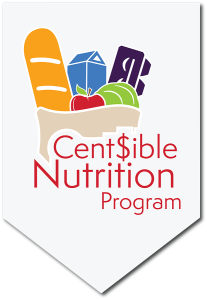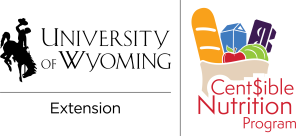If you are a gardener, winter might not be your favorite time of the year. However, winter is a great time to start planning next summer’s garden. If you gardened this summer, now is a good time to reflect on what you learned and what you might want to change next summer. If you are still thinking about starting a garden, these steps can help you plan one.
Determine what you can grow.
If you haven’t already, it is a good idea to find out what plant hardiness zone you live in. This article provides helpful information on growing vegetables in different zones. Your plant hardiness zone determines what fruits and vegetables you can grow in your climate. It is also a good idea to think about the space you have for gardening. The size of your garden helps determine what you can grow as well.
Decide what you like to eat.
This seems simple, but it is important to grow the things you enjoy eating so you do not end up throwing out what you grow.
Decide what you want to do with your produce.
Think about how many people you want to feed with your garden. Do you want to eat completely out of the garden next summer or will you still buy fruits and vegetables? Do you want extra produce to preserve at the end of the season? Knowing how you want to use your garden harvest helps you know how much you need to plant.
Determine what resources are available for your garden.
A larger garden needs a lot more space, water, soil, and time than a smaller garden. Figure out how much time you have to put into gardening and what resources you have to purchase soil, pay for water, and maintain the garden.
Figure out your garden location.
Water is a very important part of gardening. Choose an area with close access to water. Review our watering article for ideas on different ways to water and what might work best for you. Also, consider locations for the garden, depending on the sun’s location. Your garden will need a lot of sun during the growing season.
Consider the growing conditions for your garden space.
Think about creating a microclimate from some of your plants. A microclimate is a growing area that may receive more sun, less wind, or more shade that the rest of the garden. For example, natural or manmade windbreaks can help prevent damage to plants and a south-facing space will receive more sunlight and heat during the growing season. This sort of climate may be idea for warm season vegetables, like tomatoes. Check out this article on microclimates for ideas.
Decide your garden layout.
Once you have the garden location in mind, it is time to determine how you want to lay out your garden. Raised beds or container gardening might be a good option, especially if you are just getting started. Decide if you will directly plant seeds, replant seedlings, or a mixture of both. It also helps to draw the space and layout what plants will go where.
Information summarized from UW Extension publications by Katie Shockley, Writer/Editor, University of Wyoming Extension Communications & Technology.
If you are a gardener, winter might not be your favorite time of the year. However, winter is a great time to start planning next summer’s garden. If you gardened this summer, now is a good time to reflect on what you learned and what you might want to change next summer. If you are still thinking about starting a garden, these steps can help you plan one.
Determine what you can grow.
If you haven’t already, it is a good idea to find out what plant hardiness zone you live in. This article provides helpful information on growing vegetables in different zones. Your plant hardiness zone determines what fruits and vegetables you can grow in your climate. It is also a good idea to think about the space you have for gardening. The size of your garden helps determine what you can grow as well.
Decide what you like to eat.
This seems simple, but it is important to grow the things you enjoy eating so you do not end up throwing out what you grow.
Decide what you want to do with your produce.
Think about how many people you want to feed with your garden. Do you want to eat completely out of the garden next summer or will you still buy fruits and vegetables? Do you want extra produce to preserve at the end of the season? Knowing how you want to use your garden harvest helps you know how much you need to plant.
Determine what resources are available for your garden.
A larger garden needs a lot more space, water, soil, and time than a smaller garden. Figure out how much time you have to put into gardening and what resources you have to purchase soil, pay for water, and maintain the garden.
Figure out your garden location.
Water is a very important part of gardening. Choose an area with close access to water. Review our watering article for ideas on different ways to water and what might work best for you. Also, consider locations for the garden, depending on the sun’s location. Your garden will need a lot of sun during the growing season.
Consider the growing conditions for your garden space.
Think about creating a microclimate from some of your plants. A microclimate is a growing area that may receive more sun, less wind, or more shade that the rest of the garden. For example, natural or manmade windbreaks can help prevent damage to plants and a south-facing space will receive more sunlight and heat during the growing season. This sort of climate may be idea for warm season vegetables, like tomatoes. Check out this article on microclimates for ideas.
Decide your garden layout.
Once you have the garden location in mind, it is time to determine how you want to lay out your garden. Raised beds or container gardening might be a good option, especially if you are just getting started. Decide if you will directly plant seeds, replant seedlings, or a mixture of both. It also helps to draw the space and layout what plants will go where.
Information summarized from UW Extension publications by Katie Shockley, Writer/Editor, University of Wyoming Extension Communications & Technology.
Additional Resources
Learn more about preparing your garden for winter with these resources from the University of Wyoming Extension:
- Barnyards & Backyards article: Winter a great time to design your garden space
- UWE Video: Planning Your Garden
- UWE Video: Seed Selection (garden planning)
- Barnyards & Backyards article: Warm and cool season crops
- Barnyards & Backyards article: Microclimates
This is our final newsletter of the 2020 growing season. Thank you for joining us! You can revisit any of our gardening newsletters on the CNP website or find more gardening resources from Barnyards & Backyards or UW Extension.


